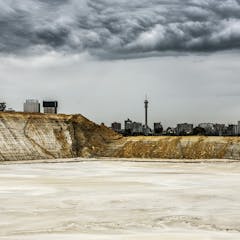
Artículos sobre Urban life
Mostrando 1 - 20 de 104 artículos

People living in rural areas perceive the threat of climate change to be lower than people in cities.

An analysis by scholars at the University of California, Davis showed that just a small number of cities in California actively consider racism when developing their plans.

Ghana’s housing deficit needs immediate attention.

From butchers to hawkers, and shelters to miners, this book reveals the informal economy and texture of the city.

City living and country living both have their benefits and downsides when it comes to mental health.

For some people, the decision to live in a vehicle is a choice with the goal of being free and self-sufficient to live how and where they want.

Cities are defined as much by their buildings as what people do in between them. Designing them comes with great responsibility.

Building a culture of cycling is essential, especially where bike use is low. A global movement of community bike workshops, also known as bike kitchens, can help.

Green spaces can be part of the plan to ‘build back better’ after COVID-19. But city officials and policy-makers must address systemic racism for urban green spaces to benefit public health.

A new report looks at how the ongoing coronavirus pandemic is changing Toronto’s patterns.

Walking all parts of Melbourne before and after the pandemic hit was eye-opening. It brought home just how much change is possible if we wish for a better, more sustainable way of living.

An increase in cyclists due to the COVID-19 pandemic means that cities need to look at what it means to develop and maintain inclusive bicycle infrastructure.

Understanding the experiences of van dwellers is important not just for those looking to cut their ties to rents and mortgages, but also for community planners and employers.

Nature is a promise of escape, a moment of relief and a relationship worth cherishing.

Politicians are keen to talk up the benefits of parks and other outdoor spaces – but less eager to spend money on their upkeep.

Rich and diverse microbiomes in our local environment are important for keeping us healthy.

City dwellers love their homes but there are different types of love that shape how cities are viewed and how they work.

First trains, then cars and, now, COVID-19 have all spurred New York to reimagine how its scarce space should be used – and what residents need to survive.

Tourists and homeless people share many common spaces, but homeless people are seen as being out of place.

People moving to new cities build new connections and develop resources to meet their needs. But the pandemic has cut off access to the spaces and facilities that enable this.
